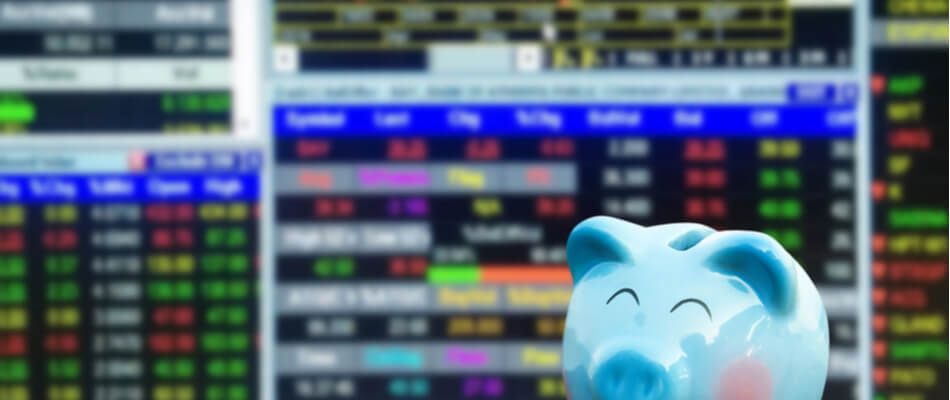CFD Trading: Going Long CFD stands for Contract for Difference . This is a simple way to trade that allows you to make the most of your money. A Contract for Difference is a binding contract, where the seller or buyer will pay the difference between the current value of a share and a future value, to the other at the time the buyer chooses to close the contract. Is the value greater? Then the seller of the contract (the broker) pays the buyer. Has the value decreased? Then the buyer must pay more to the seller. A CFD is a derivative , meaning that it derives its value from an underlying asset, often a stock or a market index. As the buyer of a CFD, you do not own the underlying asset and are never entitled to it. It is only used to value the contract. Taking a long position with CFDs ‘ Going long ‘ is simply buying a CFD position when you expect the stock price to rise. A ‘long position’ is taken when an investor believes the market will rise. This is a common way to trade CFDs . Going long in CFDs is similar to the position you would take when buying shares, for example. As a trader, you first buy the position and then sell it at a later date to close out the trade. The difference between the purchase price and the sale price is the profit or loss made on the trade. The opposite of ‘going long’ is ‘going short’ or taking a ‘short position’. In this case you assume a decrease in value from which you can profit. Buy CFD: margin When you go long with CFDs, you don’t need to have enough money to buy the asset you are trading. The amount of money you need, or ‘margin’, depends on the broker and what you are trading. For example, for shares you might need 10% and for other securities it might be even less. This leverage allows you to make the most of your money, as the contract still benefits from the amount the asset changes in value. Simply put, if you only put down 10% and the underlying share increases in price by 10%, you have doubled your money. We will illustrate this with an example in which we also include the necessary incidental costs that come with CFD trading. Suppose you expect the shares of company X, which currently cost €1.25, to increase in value. You want to take a long CFD position for 1000 shares. The value of this is €1500, but you do not need that much cash. CFDs of 10% require a deposit of only €150. You also pay a small commission ( a spread ) to the broker. Two weeks later, the shares have each risen to €1.35 and you decide to close the CFD position. For every day that you hold CFDs, interest is charged. In effect, you are borrowing money to maintain your position in the shares. This interest is related to the bank interest rate. For this example, we assume that the interest is €5. You close the position with a profit of 10 cents per share and have to pay a trading commission again. The net profit is 1000 x 10 cents, minus two commissions and the interest, which totals €95. This is a profit of more than 60% of the stake. Long CFD trading, a profitable example To open a long position, you will need to place an order to buy the CFD you want. Each broker will use a slightly different method to place orders, but if you have bought a stock before, it is very easy to make the transition to CFDs. To go short, you need to place an order to sell the CFD. The way the order is placed depends on the broker you use. Opening the position Let’s say company XYZ is listed at €4.24 / 4.25. You expect the price to rise and decide to buy 15,000 shares as a CFD at €4.24. This bid price gives you a position size of €63,600 (15,000 x €4.24). Next, we assume a margin requirement of 10%. When placing the order, €6,360 is allocated from your account to the trade as initial margin. Be aware that if the position moves against you, i.e. the price falls instead of rising, it is possible to lose more than this margin of €6,360. For the same amount, you could only buy 1,500 shares with a regular stockbroker. In this example, commission is charged at 10 basis points (one basis point is 0.01 percentage points). So the commission on this trade is only 0.1% or approximately €63 (15,000 shares x €4.24 x 0.1%). You now have a position of 15,000 XYZ CFDs worth €63,600. Close CFD position A month later, the price of XYZ has risen to €4.68 / 4.69. Your expectation that the price would rise proves correct and you decide to take your profit. You sell 15,000 shares at the bid price, €4.68. The commission of 10 basis points will also apply to the closing of the transaction and amounts to €70 (15,000 shares x €4.68 x 0.1%). The gross profit on the transaction is calculated as follows: Slot level: €4.68 Opening level: €4.24 Difference: 0.44 Gross profit on the trade: €0.44 x 15,000 shares = €6,600. After deducting the commission costs (€63 + €70) from the total turnover, you realise a profit of €6,467. To determine the total profit on the transaction, you must also take into account the commission you paid and interest and dividend adjustments. Long CFD trade, a loss-making example It is also possible that the CFD does not do what you expected in advance and decreases in value while you have opened a long position. With this calculation example we show what the financial consequences of this are. Shares in company ABC are traded for €8.33 / €8.34. You think the price
